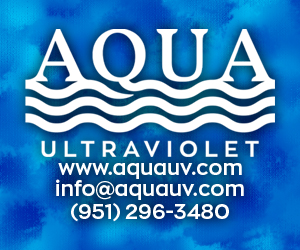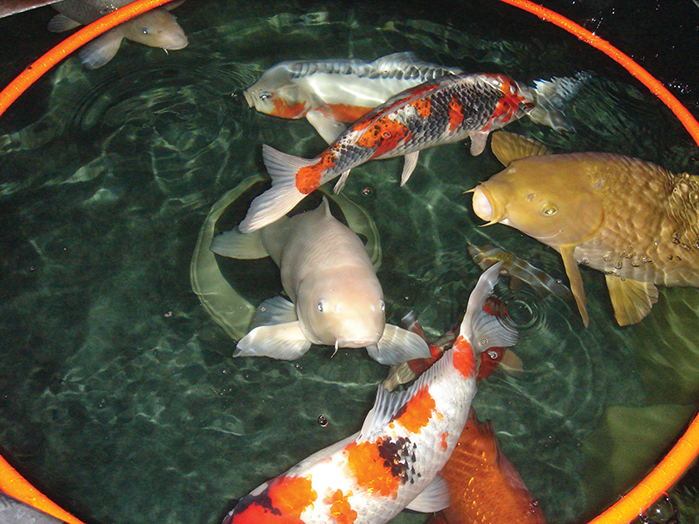
Most of us who have been in this profession for a long time have had the experience of adding newly purchased fish or plants to an existing population, only to see them start dying within a couple of weeks. Holding new fish or plants in a quarantine tub for a length of time before placing them in the pond is crucial for avoiding this problem. Yes, you can play Russian Roulette and take your chances of not quarantining newly acquired fish or plants, but sooner or later, a disease will be introduced. Dreadful experiences like this are on my mind every time I consider adding fish to an existing population.
In my experience, the optimal length of time for quarantine is six weeks. This is a long time, but some diseases will not show up until the period is almost over. A minimum of two weeks is essential, but try to do the six weeks.
No matter how healthy a fish looks, it can still be a “Typhoid Mary” and carry a disease or parasite. All fish and plants sold by wholesalers and retailers can potentially have diseases; no business is immune to this. Commercial operations should routinely practice quarantining, because new fish are constantly being brought in from many sources. But in reality, most retailers (and some wholesalers) do not have the facilities to quarantine, so their whole setup could be contaminated. Even though they mean well, they are relying on their sources to supply healthy fish, which cannot be guaranteed. The fish are also stressed, which can contribute to the outbreak of a disease that may have been sublethal prior to purchase.
When to Quarantine?
There are times when quarantine is not necessary, like when you add fish or plants to a pond that does not have an existing population of fish, or when you absolutely know the history of the fish you are acquiring. For instance, a friend raised them and wants to part with some of them. This may be OK, but even then, make sure the friend has not recently lost fish or added any new fish to their population. Finally, you do not necessarily need to quarantine when adding to an existing population of low-quality or low-value fish. But even then, it is sad if the fish start dying.
Another good reason for putting your newly acquired fish in a quarantine container or tub is that it is so much simpler to treat the fish for a disease when necessary. The amount of salt or other treatment will be so much less than if you were adding it to an entire pond. Also, some treatments may be toxic to the plants or some parts of the pond’s ecosystem.How Do I Do It?
OK, you have decided to quarantine — what next? It’s worth noting that a lot of fish are lost in the quarantine tank due to insufficient accommodations. So, put a lot of effort into these temporary quarters. The quarantine aquarium or tub needs to be a minimum of 20 gallons, depending on the size, number and kind of fish. Stock tanks are great containers for our pond fish and are easily stored when not in use. They come in sizes up to 600 gallons and larger. My philosophy is, the bigger the better, and as large as your space and budget can allow &151; err on the side of too big, if you can.
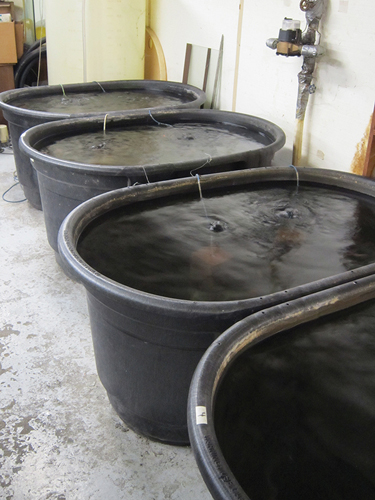
You will want to circulate the water with an air pump or water pump. Keep everything well circulated and filtered. The practice of water changes every two or three weeks is a critical step in maintaining good water quality — see here –> article “Overwintering Pond Fish Indoors” in the January/February 2013.
Isolation of the container’s water is essential for the quarantine to be successful. Any nets, buckets and other equipment — even your hands — must be dedicated to that container or disinfected before touching any of your existing pond’s water or equipment. Ninety-one percent isopropyl alcohol can be used on your hands by simply spraying them with a handheld sprayer. Other equipment can be treated with this or other commercial disinfectants. Large amounts of organic matter and debris that can potentially accumulate on equipment will need to be removed before disinfecting.
In my experience, the optimal length of time for quarantine is six weeks. This is a long time, but some diseases will not show up until the period is almost over. A minimum of two weeks is essential, but try to do the six weeks.
Which Treatment Do I Use?
Identifying what disease is present is a crucial first step in determining which treatment to use. I do not have enough space here to address how to determine the type of disease and its treatment; there are many other resources detailing how to do this. For the most common ones, you can add pure NaCl salt (without iodine) to all quarantine containers. Add pickling and canning salt or pure water softener salt (without any additives) at the rate of 1 pound per 100 gallons. This is the same as 10 teaspoons per 10 gallons or 1 gram per liter. If the fish show signs of a disease, increase the dosage rate of salt to a total of 3 pounds per 100 gallons. Do this over an additional two days at 1 pound per day.
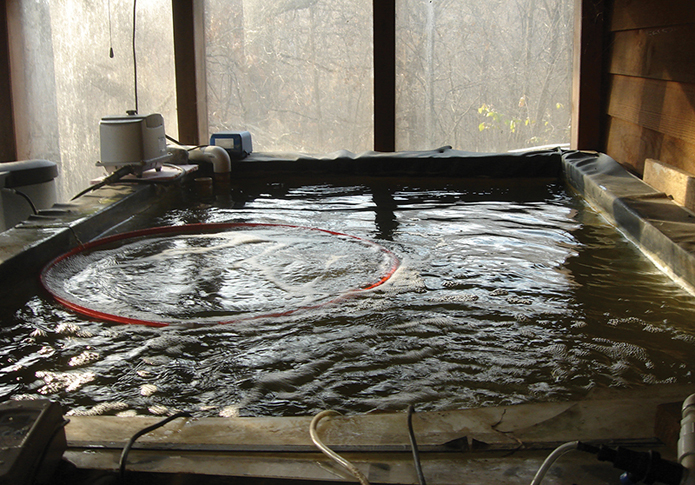
Add gradually. The fish really enjoy this level of salt in their water. It allows them to more naturally control osmotic pressure within their bodies. This level will harm the plants, however. You can add more — up to 7 pounds per 100 gallons — but only for 10 days or less. A majority of diseases will be cured at these rates. Of course, there are some diseases that will not be affected by the addition of salt.
Containers and tubs should be covered with a heavy top, like weighted 1-by-1 welded wire or something similar. Koi, for example, really like to jump, especially when they are used to a larger body of water. Countless times I have witnessed a lightweight cover easily getting knocked off the container when a fish jumped.
Set up the container in a shady spot, or keep plants in it. If in sunlight, adding some filamentous algae (string algae) works great for quarantine setups. Yes, there is a use for this type of algae! The algae serve very effectively as a veggie filter. Water hyacinths or water lettuce, where legal, will also work very well for this purpose.
Catering to the Koi
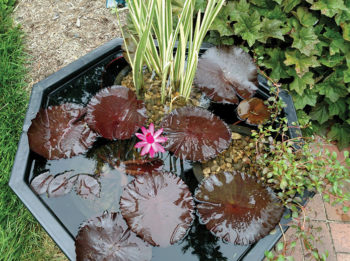
If possible, add a dither fish to the container with your newly acquired fish. This is a fish that you own that is acclimated to your water and you being around them. Therefore, they will not be as timid during feeding. A dither fish will reduce the stress on your new fish simply by being calm. The dithers show them the way, so to speak. This is a fish that, having been exposed, may come down with a disease, and you may therefore lose; so, choose a fish that you can part with. Common aquarium fish that are not timid work well for this.
Do not feed the fish for the first week or two. They will most likely be spooked anyway and may not want to eat. Uneaten food rotting in the water is a fish killer, especially in these relatively small containers. Make sure that any uneaten food is netted or siphoned out. Having a bare-bottomed container is essential to be able to do this.
Plant Problems
I have mentioned the possibility of plants transmitting a parasite or disease to an existing population of fish. Most of the time, it is a parasite when plants are involved, but a disease can also be spread to fish. Plants that are purchased from a source where they come out of a fishless pond or container may eliminate the necessity of quarantining or treating plants. However, there are situations where an invasive plant is hitchhiking on the purchased plants, and they can accidentally be brought into your pond. Simply washing and inspecting all plants is crucial for reducing this possibility. Even in more temperate climates where they are killed by freezing temperatures, water aphids can be inadvertently reintroduced by adding plants that are infested with them or their eggs. So, in other words, plants should also be quarantined. A two-week period is all that is necessary to quarantine plants.
Or, instead of quarantining, plants can be submersed in a 37-percent formalin solution mixed at the rate of 2 to 3 cubic centimeters per 10 gallons of water. Your pharmacy should have formalin in this concentration. Immerse the plants completely (even floating plants) for three to five hours. Stir the plants in the dip every 30 minutes, or simply place an air stone in the dip tank. The floating plants will need to be held underwater with a weighted net. Then, rinse the plants in regular tap water, and you should be able to place them directly into your pond with fish.
There is a lot more to disease prevention than simply buying good-quality fish from reputable sources. Countless times, pond owners have asked me what they should do when they are experiencing dying fish.
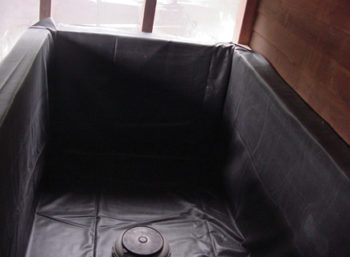
First, you should identify the disease or parasite problem, followed by the possible treatments. Although in my mind I know the problem could have been avoided had they quarantined, this is a sensitive time to say it. I usually wait until we have treated and gone through the huge effort to save the remaining fish before educating them about quarantine procedures. Somehow, we need to convey to our clients the vital importance of quarantining before they have experienced this.
